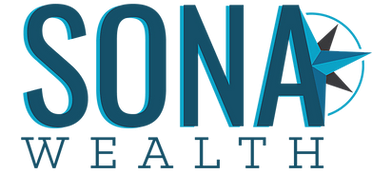Menu
Today’s topic is the Mega Backdoor Roth, a strategic approach to retirement savings that shouldn’t be confused with a traditional Backdoor Roth IRA. This strategy involves utilizing the 401(k) plan to make after-tax contributions beyond the standard employee contribution limits, assuming one has substantial income. Roth assets are taxed going in but can be withdrawn tax-free in retirement if certain conditions are met. For those over 50, the employee contribution limit for 2024 is over $30,000 due to catch-up contributions, highlighting the need for significant disposable income to take full advantage. The total 401(k) contribution limit, including employer match and after-tax contributions, for those over 50 can reach $76,500, and for those under 50, $69,000. If your plan allows, you can contribute to a non-Roth after-tax bucket within your 401(k) and potentially convert those contributions to Roth. The possibility of automated conversions and rollovers to a Roth IRA can simplify the process, but it’s important to navigate potential taxes on earnings and follow plan rules carefully. There are considerations to bear in mind, such as creditor protections in a 401(k), which might not exist in an IRA, and changes in legislation that might affect high earners over 50, who must make catch-up contributions as Roth. Utilizing a Mega Backdoor Roth can be a significant boost for those nearing retirement, offering a path to contribute more Roth dollars without income limits, and should be considered for a healthier, wealthier, and happier retirement. Key Themes & Timestamps 1. Identify Key Themes: – Mega Backdoor Roth IRA: The concept of a mega backdoor Roth IRA and its differentiation from a standard backdoor Roth IRA. – Retirement Savings Strategies: The discussion focuses on optimizing retirement savings, particularly for individuals over 50. – Financial Planning and Tax Considerations: The importance of understanding tax implications, IRS rules, and strategies involved in financial planning for retirement. – Plan Eligibility and Contribution Limits: Detailed discussion on 401(k) plan contribution limits, employer matches, Roth, and after-tax contributions. – Legislative Changes and Uncertainty: Potential or recent changes in legislation affecting retirement savings options, such as the Secure Act. 2. Contextual Connections: – Mark Struthers introduces the mega backdoor Roth IRA as a sophisticated retirement planning strategy, highlighting its cool factor and potential advantages for those with significant disposable income (00:00:36). – The speaker touches upon legislative uncertainties regarding retirement savings strategies, hinting at the potential for these opportunities to change in the future (00:02:31). – The interplay between traditional, Roth, and after-tax non-Roth contributions within a 401(k) plan is explained, revealing the complexity of managing multiple types of contributions (00:04:16). – Struthers elaborates on the high contribution limits for individuals over 50 and the process of converting after-tax contributions into Roth IRA funds, stressing the importance of understanding plan specifics and potential tax liabilities (00:04:16, 00:07:14). 3. Timestamps and Speaker Relevance: – Introduction to mega backdoor Roth IRA: [00:00:36] – Financial planning for demographic over 50: [00:00:36] – Legislative changes and strategies: [00:02:31] – Roth and after-tax contributions within a 401(k): [00:04:16] – Policy changes and high earners: [00:09:55] 4. Synthesize Insights: Mark Struthers elaborates on the nuances of this technique, such as the differences between contribution types, the importance of plan eligibility, and the high contribution limits available to those over 50. He also stresses the need to stay up-to-date with legislative changes that might impact these strategies, illustrating the importance of flexibility and awareness in financial planning. The conversation places a significant emphasis on the criticality of understanding the tax implications and rules associated with various retirement-saving approaches. Disclosure Investment advisory services are offered through Sona Financial LLC (DBA Sona Wealth Advisors, Sona Wealth, Sona Wealth Management), an investment adviser registered in the state of MN. Sona Financial only offers investment advisory services where it is appropriately registered or exempt from registration and only after clients have entered into an investment advisory agreement confirming the terms of engagement and have been provided a copy of the firm’s ADV Part 2A brochure and document. This video is for educational purposes only. Nothing discussed during this show/episode should be viewed as investment advice. If you have questions pertaining to your specific situation, please consult your own financial professional.
